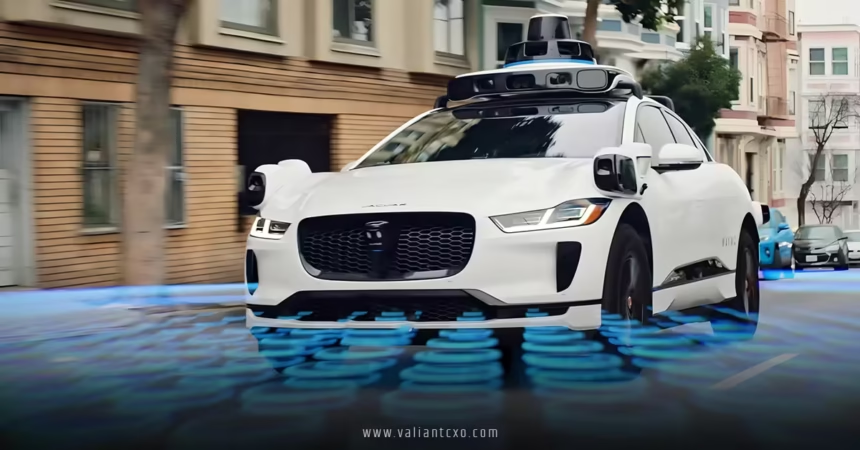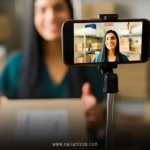AI in autonomous vehicles USA is transforming how we think about transportation. Imagine a world where your car drives itself, navigating bustling city streets or sprawling highways with the precision of a seasoned driver, all while you sit back and enjoy the ride. This isn’t science fiction—it’s happening right now. From Silicon Valley to Detroit, the USA is at the forefront of integrating artificial intelligence (AI) into self-driving cars, promising safer roads, reduced traffic, and a greener future. But how did we get here, and where is this tech headed? Let’s dive into the world of AI in autonomous vehicles USA and explore its impact, challenges, and potential.
What is AI in Autonomous Vehicles USA?
At its core, AI in autonomous vehicles USA refers to the use of artificial intelligence to enable cars to drive themselves without human intervention. Think of AI as the brain of the vehicle, processing massive amounts of data in real-time to make split-second decisions. These vehicles rely on sensors, cameras, radar, and LIDAR (Light Detection and Ranging) to “see” their surroundings, while AI algorithms analyze this data to navigate roads, avoid obstacles, and follow traffic rules.
In the USA, companies like Tesla, Waymo, and General Motors are leading the charge, each with their own approach to AI in autonomous vehicles USA. Tesla’s Autopilot, for instance, uses neural networks to mimic human driving behavior, while Waymo’s self-driving taxis in cities like Phoenix rely on complex machine learning models. It’s like teaching a car to think like a human, but with superhuman reflexes and an encyclopedic knowledge of traffic patterns.
How Does AI Power Autonomous Vehicles?
AI in autonomous vehicles USA works through a combination of machine learning, computer vision, and sensor fusion. Here’s the breakdown:
- Machine Learning: AI models are trained on vast datasets of driving scenarios, learning to recognize patterns like lane markings, pedestrians, or stop signs. It’s like a teenager learning to drive, but instead of a parent yelling “Brake!”, the car learns from millions of virtual miles.
- Computer Vision: Cameras capture the vehicle’s surroundings, and AI processes these images to identify objects in real-time. Ever wonder how a self-driving car spots a deer darting across the road? That’s computer vision at work.
- Sensor Fusion: AI combines data from multiple sensors—LIDAR, radar, and ultrasonic—to create a 360-degree view of the environment. It’s like giving the car a sixth sense, ensuring it never misses a thing.
This synergy allows autonomous vehicles to handle complex driving situations, from merging onto highways to navigating construction zones, all while prioritizing safety.
The Evolution of AI in Autonomous Vehicles USA
The journey of AI in autonomous vehicles USA didn’t start overnight. It’s been a decades-long road trip, with plenty of pit stops and detours. In the early 2000s, the U.S. Department of Defense’s DARPA Grand Challenge sparked innovation by challenging teams to build self-driving vehicles capable of navigating a desert course. Fast forward to today, and AI in autonomous vehicles USA has evolved from experimental prototypes to commercial products.
Key Milestones in the USA
- 2004-2007: DARPA Grand Challenges showcased early autonomous vehicles, proving that AI could handle basic navigation tasks.
- 2010s: Google’s Waymo project emerged, testing self-driving cars on public roads. By 2016, Waymo’s vehicles were logging millions of autonomous miles.
- 2020s: Tesla’s Full Self-Driving (FSD) beta rolled out, bringing AI in autonomous vehicles USA to consumer cars. Meanwhile, companies like Cruise and Aurora pushed for fully autonomous ride-hailing services.
Today, AI in autonomous vehicles USA is a multi-billion-dollar industry, with investments pouring in from tech giants and automakers alike. The USA’s unique blend of innovation, infrastructure, and regulatory frameworks makes it a hotbed for this technology.
Benefits of AI in Autonomous Vehicles USA
Why all the hype around AI in autonomous vehicles USA? Because the benefits are game-changing. Let’s explore why this tech is worth getting excited about.
Enhanced Safety
Human error causes over 90% of car accidents in the USA, according to the National Highway Traffic Safety Administration. AI in autonomous vehicles USA aims to change that. Self-driving cars don’t get distracted, drunk, or drowsy. They’re like the ultimate designated driver, always alert and ready to react. Studies suggest that widespread adoption of autonomous vehicles could reduce traffic fatalities by up to 80%.
Reduced Traffic Congestion
Ever been stuck in a bumper-to-bumper traffic jam? AI in autonomous vehicles USA could ease that pain. Self-driving cars communicate with each other and traffic systems, optimizing routes and reducing bottlenecks. Imagine a highway where cars flow like a synchronized dance, minimizing delays and frustration.
Environmental Impact
AI in autonomous vehicles USA isn’t just about convenience—it’s also about sustainability. Autonomous vehicles can optimize driving patterns to reduce fuel consumption, and many are electric, cutting down on emissions. Companies like Tesla and Rivian are pairing AI with electric vehicles to create a greener future. It’s like giving Mother Earth a high-five while cruising down the road.
Accessibility for All
Self-driving cars open up mobility for those who can’t drive, like the elderly or disabled. AI in autonomous vehicles USA is about inclusivity, ensuring everyone can get from point A to point B without relying on others. It’s a game-changer for independence and quality of life.
Challenges Facing AI in Autonomous Vehicles USA
As exciting as AI in autonomous vehicles USA is, it’s not all smooth sailing. There are some serious roadblocks to overcome before self-driving cars become the norm.
Technical Hurdles
AI in autonomous vehicles USA is incredibly complex. Teaching a car to handle rare scenarios—like a child chasing a ball into the street or a sudden snowstorm—requires massive computational power and data. Even the best AI systems can struggle with edge cases, where split-second decisions mean life or death.
Regulatory Roadblocks
The USA’s patchwork of state and federal regulations creates a bumpy ride for AI in autonomous vehicles USA. While states like California and Arizona are friendly to self-driving car testing, others have stricter rules. Creating a unified regulatory framework is like herding cats—everyone’s got their own ideas about what’s safe.
Public Trust and Adoption
Would you feel safe letting a computer drive you through rush-hour traffic? Many Americans are skeptical about AI in autonomous vehicles USA. High-profile accidents, like Tesla’s Autopilot crashes, have fueled distrust. Building public confidence requires transparency, rigorous testing, and time.
Ethical Dilemmas
AI in autonomous vehicles USA raises tough ethical questions. If a self-driving car faces an unavoidable accident, how does it decide who to prioritize? Programmers must grapple with these moral gray areas, and there’s no easy answer. It’s like asking a car to play philosopher in a split second.
Leading Players in AI in Autonomous Vehicles USA
The USA is home to some of the biggest names in autonomous vehicle technology. Let’s meet the heavy hitters driving AI in autonomous vehicles USA forward.
Tesla: The Consumer Pioneer
Tesla’s Autopilot and Full Self-Driving systems are household names. Using AI in autonomous vehicles USA, Tesla’s neural networks process data from cameras and sensors to enable features like lane-keeping and adaptive cruise control. While not fully autonomous yet, Tesla’s ambitious goal is to make self-driving cars accessible to everyday drivers.
Waymo: The Ride-Hailing Innovator
Waymo, a subsidiary of Alphabet, is a leader in fully autonomous vehicles. Operating driverless taxis in cities like Phoenix and San Francisco, Waymo’s AI in autonomous vehicles USA relies on LIDAR and advanced mapping to navigate complex urban environments. It’s like having a personal chauffeur who never needs a coffee break.
Cruise: The Urban Explorer
Backed by General Motors, Cruise is focused on AI in autonomous vehicles USA for urban ride-hailing. Its electric Chevy Bolts are a common sight in San Francisco, where they’re testing fully autonomous driving. Cruise’s AI is designed to handle the chaos of city streets, from jaywalking pedestrians to double-parked delivery trucks.
Aurora: The Trucking Trailblazer
Aurora is taking AI in autonomous vehicles USA to the freight industry. By developing self-driving trucks, Aurora aims to revolutionize logistics, making long-haul trucking safer and more efficient. Picture a convoy of trucks cruising down I-95, guided by AI that never gets tired.
The Future of AI in Autonomous Vehicles USA
What’s next for AI in autonomous vehicles USA? The road ahead is full of possibilities. Here are some trends to watch:
Level 5 Autonomy
Most self-driving cars today operate at Level 2 or 3 autonomy, requiring some human oversight. The holy grail is Level 5—fully autonomous vehicles that can drive anywhere, anytime, without a human driver. AI in autonomous vehicles USA is inching closer to this goal, but we’re not there yet.
Integration with Smart Cities
Imagine cities where traffic lights, road sensors, and vehicles talk to each other in real-time. AI in autonomous vehicles USA will play a key role in smart city infrastructure, optimizing traffic flow and reducing accidents. It’s like turning cities into a giant, well-oiled machine.
Expansion Beyond Passenger Cars
AI in autonomous vehicles USA isn’t just for personal cars. Self-driving delivery vans, buses, and even drones are on the horizon. Companies like Amazon and UPS are already experimenting with autonomous delivery vehicles, bringing packages to your doorstep with AI precision.
Job Creation and Disruption
While AI in autonomous vehicles USA may reduce the need for human drivers, it’s also creating new opportunities. From AI engineers to data scientists, the industry is sparking a wave of high-tech jobs. It’s a double-edged sword—disrupting old roles while creating new ones.
How AI in Autonomous Vehicles USA Impacts You
You might be wondering, “How does AI in autonomous vehicles USA affect me?” Whether you’re a commuter, a business owner, or just someone who loves a good road trip, this technology will touch your life. Safer roads mean fewer accidents, and smarter traffic systems mean less time stuck in gridlock. Plus, with autonomous ride-hailing services, you might not even need to own a car in the future. It’s like trading your steering wheel for a stress-free ride.
Conclusion
AI in autonomous vehicles USA is more than just a tech trend—it’s a revolution that’s reshaping how we move. From enhancing safety to reducing emissions, the benefits are undeniable, but challenges like technical hurdles, regulations, and public trust remain. Companies like Tesla, Waymo, and Cruise are pushing the boundaries, bringing us closer to a future where self-driving cars are as common as smartphones. As AI in autonomous vehicles USA continues to evolve, it’s up to us to embrace the change, ask tough questions, and steer this technology toward a brighter, safer future. So, are you ready to let AI take the wheel?
FAQs
1. What is the current state of AI in autonomous vehicles USA?
AI in autonomous vehicles USA is advancing rapidly, with companies like Tesla and Waymo testing self-driving cars on public roads. However, most vehicles are still at Level 2 or 3 autonomy, requiring some human oversight.
2. How safe are autonomous vehicles in the USA?
AI in autonomous vehicles USA aims to reduce accidents caused by human error. While self-driving cars have shown promise, rare edge cases and public skepticism mean ongoing testing is crucial for safety.
3. Which companies are leading AI in autonomous vehicles USA?
Tesla, Waymo, Cruise, and Aurora are key players. Each focuses on different applications, from consumer cars to ride-hailing and trucking, driving innovation in AI in autonomous vehicles USA.
4. What are the main challenges for AI in autonomous vehicles USA?
Technical limitations, regulatory differences across states, and public trust are major hurdles. Ethical dilemmas, like decision-making in accidents, also complicate the adoption of AI in autonomous vehicles USA.
5. How will AI in autonomous vehicles USA impact jobs?
While AI in autonomous vehicles USA may reduce demand for human drivers, it’s creating jobs in AI development, data analysis, and vehicle maintenance, reshaping the workforce.
For More Updates !! : valiantcxo.com


